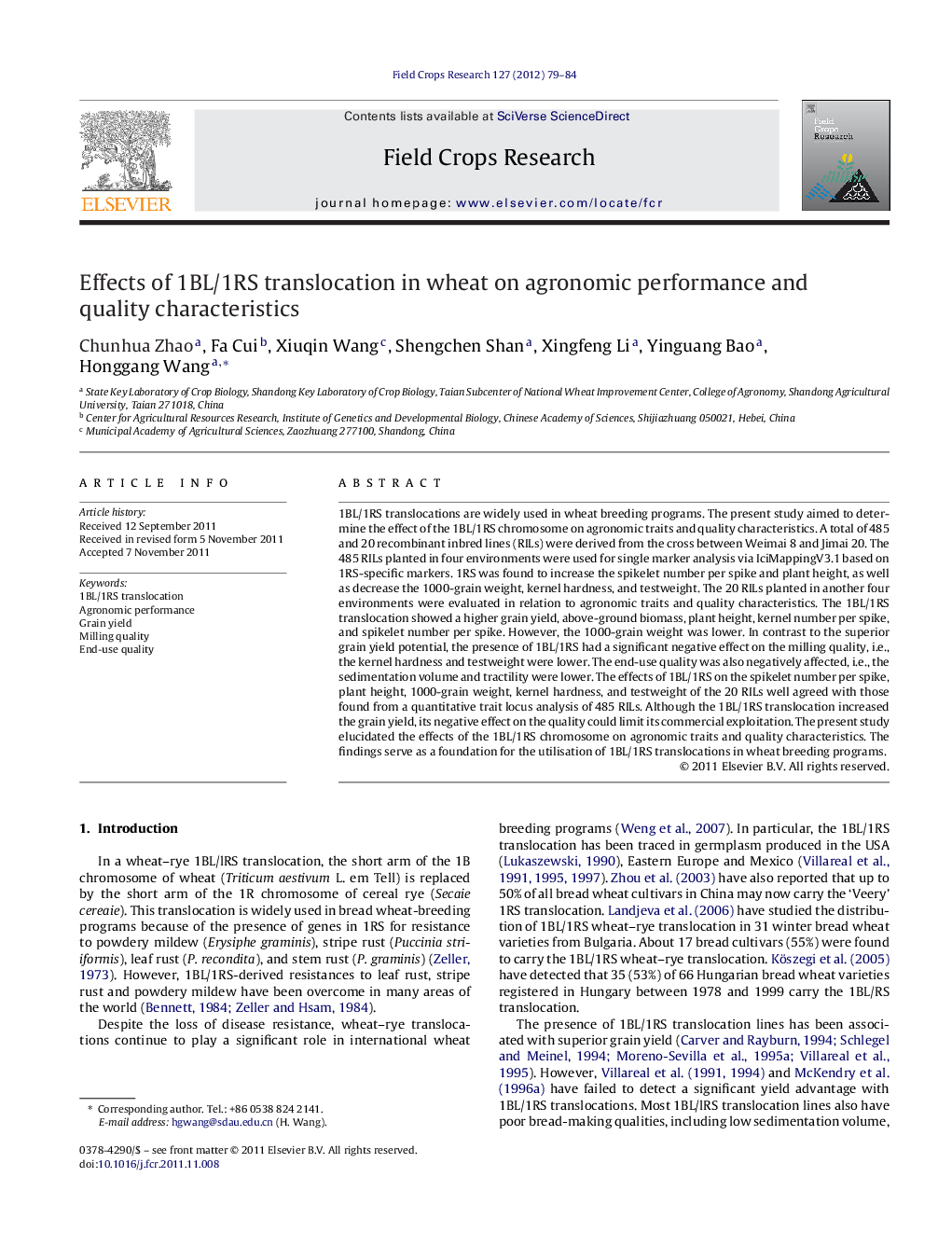| Article ID | Journal | Published Year | Pages | File Type |
|---|---|---|---|---|
| 4510701 | Field Crops Research | 2012 | 6 Pages |
1BL/1RS translocations are widely used in wheat breeding programs. The present study aimed to determine the effect of the 1BL/1RS chromosome on agronomic traits and quality characteristics. A total of 485 and 20 recombinant inbred lines (RILs) were derived from the cross between Weimai 8 and Jimai 20. The 485 RILs planted in four environments were used for single marker analysis via IciMappingV3.1 based on 1RS-specific markers. 1RS was found to increase the spikelet number per spike and plant height, as well as decrease the 1000-grain weight, kernel hardness, and testweight. The 20 RILs planted in another four environments were evaluated in relation to agronomic traits and quality characteristics. The 1BL/1RS translocation showed a higher grain yield, above-ground biomass, plant height, kernel number per spike, and spikelet number per spike. However, the 1000-grain weight was lower. In contrast to the superior grain yield potential, the presence of 1BL/1RS had a significant negative effect on the milling quality, i.e., the kernel hardness and testweight were lower. The end-use quality was also negatively affected, i.e., the sedimentation volume and tractility were lower. The effects of 1BL/1RS on the spikelet number per spike, plant height, 1000-grain weight, kernel hardness, and testweight of the 20 RILs well agreed with those found from a quantitative trait locus analysis of 485 RILs. Although the 1BL/1RS translocation increased the grain yield, its negative effect on the quality could limit its commercial exploitation. The present study elucidated the effects of the 1BL/1RS chromosome on agronomic traits and quality characteristics. The findings serve as a foundation for the utilisation of 1BL/1RS translocations in wheat breeding programs.
► 1BL/1RS lines had positive effect on grain yield. ► Higher kernel number per spikelet contributed to higher grain yield of 1BL/1RS lines. ► 1BL/1RS lines had negative effect on milling quality and end-use quality. ► Results of QTL analysis agreed with comparing averaged values of the two group lines.
